Philips Series 5000 2-in-1 Air Purifier and Dehumidifier review: A gentle touch
Summary
Quick verdict: It's the dehumidifier you need when you don’t need much dehumidification.
- Doesn’t use much electricity
- Quiet
- Easy to use
- Dehumidification approach can be described as “gentle” at best
- Air purification is also pretty gentle
- Not for places that need a powerful dehumidifier or air purifier
- The screen on our first unit started dying within a month
Dehumidifiers have become really important in Australia these past 2 years as we stare down a third La Nina in a row. The pandemic has made us more aware of how gross the air is in poorly ventilated spaces. These are also a must in new, well-sealed apartments that become humidity parties in winter as the windows get covered in condensation.
This is no doubt why dehumidifiers and air purifiers have been selling out so rapidly across the country.
The Philips Series 5000 2-in-1 Air Purifier and Dehumidifier occupies an odd space in the market, but one that I still feel is important. While other, more expensive and energy-hungry machines tout their prowess at being able to suck all the moisture out of a room in minutes, the Series 5000 takes a more gentle approach.
Don't get me wrong, at $999.95 it's still quite expensive and there are significantly cheaper models (like the DeLonghi DD230P at $719) that do a much, much better job of dehumidifying.
The specialty of the Philips Series 5000 is that it's quiet. You can sleep with this in the same room while more competent dehumidifiers sound like a jet engine. I haven't encountered another dehumidifier this quiet that still managed to do a semi-decent job.
Philips Series 5000 2-in-1 review: Design
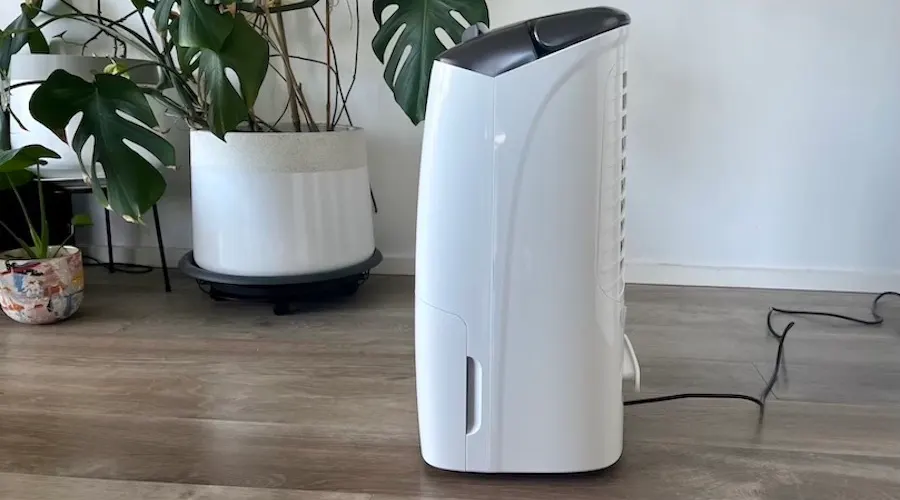
Image: Alice Clarke/Finder
There is a comforting same-ness with the design of dehumidifiers. It's like all the designers went to a conference and decided "ugly white monolith is fine, let's go out for lunch". For a product that ideally needs to be in the middle of the room to be effective, it sure does look like something that's meant to be hidden in a cupboard.
That said, this is definitely one of the more sleek and attractive ugly white monoliths. Where others have gone for weird cutouts that no doubt maximise performance but turn up the ugg rating, Philips has gone for a smoothness that I enjoy. The circle that indicates air quality puts out a comforting glow, the screen is nice and simple (though we'll get to that later) and the water reservoir is nicely hidden.
While I still deeply, deeply hate capacitive touch buttons on devices that could just as easily have push buttons or dials, the capacitive touch buttons on the Series 5000 aren't too bad. The function of having to cycle through various numbers and settings instead of having up/down buttons or a dial is frustrating. However, they're also not settings you need to change very often. At most, you'll only be irritated by it once a month and so the trade-off of slightly less ease of use for a sleeker design seems acceptable.
However, the water reservoir was designed by someone who doesn't have wooden floors and never had to empty it themselves. This is a hateful reservoir that wants you to suffer.
When you take it out, it'll drip a bit of water on your floor. Heaven help you if you decide to empty it into a sink instead of a bath because this leaks everywhere. There is 1 small hole on 1 side (despite the vessel being U-shaped, so you can't cleanly empty it in 1 go) and you would think the water would only get out from that 1 hole. It doesn't.
Water will come from a great many places that seemed water-tight only moments ago. You will get water everywhere. Roughly 6 months of using this machine and I still have not found a way to empty it into a sink without getting water everywhere. I have tried so many techniques.
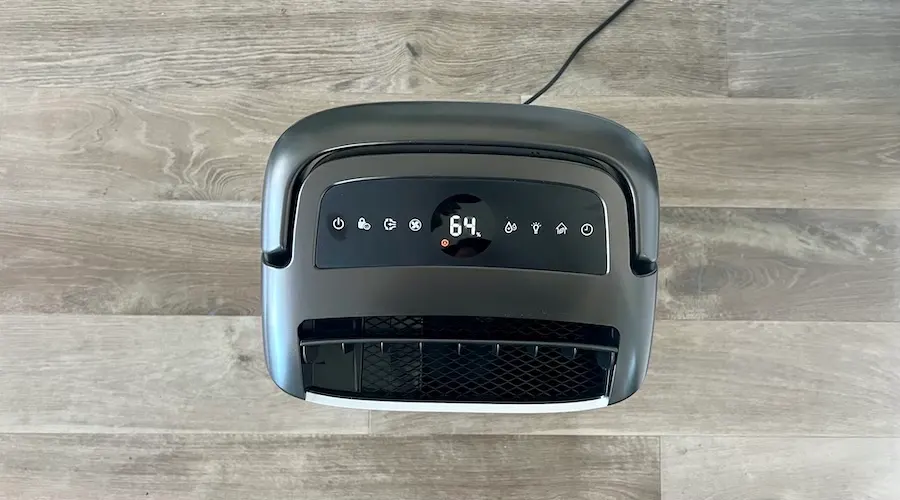
Image: Alice Clarke/Finder
What's worse is that a little pool of water will form on the top of the lid near where a ventilation point is located. This little part of the lid will become mouldy and stay that way no matter how often you clean it. I hope the designer of that lid has their favourite TV show cancelled on a cliffhanger.
The reservoir is also a bit too small. It would be nice if it could hold more water so you could go longer between emptying. Then again, imagine how much water would go everywhere if it had access to even more liquid.
As for the rest of it, the filter is easy to access and clean, the louvres are small but fine and overall it's a nice and easy-to-use machine as long as you don't have to empty it that often (which you won't, for reasons you'll read below).
Philips Series 5000 2-in-1 review: Performance
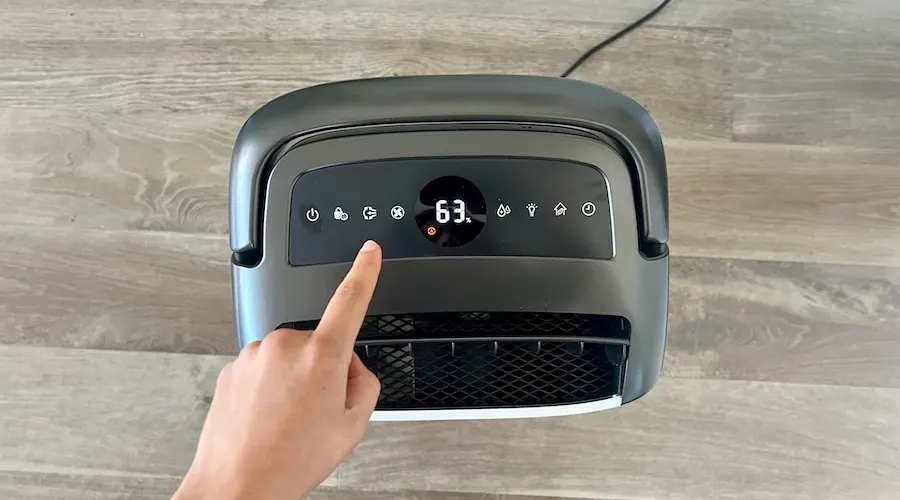
Image: Alice Clarke/Finder
The big problem with moving air around is it's surprisingly loud and powerful. To quote Lao Ma from Xena, "Nothing is as soft as water, yet who can withstand the raging flood?" Taking water from air is like that. It seems all gentle until you try to pull a lot of it from the air at once and then you have to deal with the mechanical screaming.
Many other devices prioritise dehumidifying and purifying the air as fast as possible, which is important if you have high or sustained humidity or bad air. But that makes these devices unsuitable for bedrooms or having them on while watching a movie. Humidity isn't only a problem in places where loud noises are okay but in homes where people have to live, work, sleep and entertain themselves.
As much as I love the brutal efficiency of my old DeLonghi model, you couldn't sleep with it on. Meanwhile, there were nights that I forgot we had the Philips Series 5000 in our bedroom while we slept peacefully.
The Philips 5000 also uses roughly a quarter of the power of our old DeLonghi model (which I think might have been part of the Aria series, but it's been a while). That's important because dehumidifiers are power-hungry beasts.
However, the flip side of it is that properly dehumidifying a space is loud and power-hungry.
This machine has been pretty good at keeping the humidity to 60% in my overly well-sealed apartment. The ideal is 50%, but I'm trying not to be too picky.
The problem is that when the weather is cold, the humidity inside gets above 80% and the windows get condensation inside (which is a major mould risk), this dehumidifier just can't manage it. It won't be full, it'll be going as hard as it can and the humidity would still be 80%. My beloved Mitsubishi would never allow that.
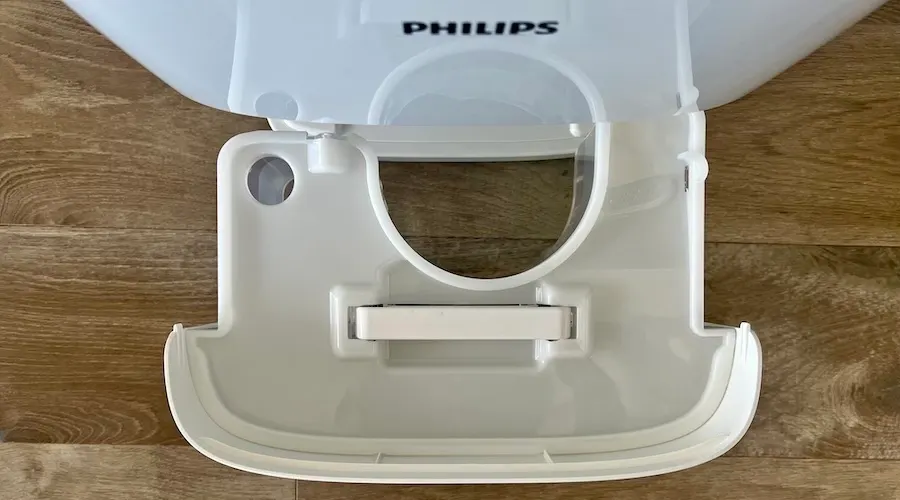
Image: Alice Clarke/Finder
In the months that we've been using the machine, we've only had 5 or 6 nights where all the windows got wet, which is much better than it would have been with no dehumidifier, but it's 5 or 6 more than we should have with a $1,000 dehumidifier.
What's more, I'm concerned about the build quality of the dehumidifier. The simple LCD screen should be a difficult thing to get wrong, but on our first model, 2 parts of the screen died after around a month and then the replacement through Philips PR took a long time due to a shortage of units.
We've had the new model for a little over a month (I wanted to give the screen time to see what would happen) and the screen still seems to be working. But I'm a little wary. Of course, the unit still worked perfectly well, it was just that I had to work out the numbers on the screen from context clues rather than from being able to read them, which is disappointing in a machine at this price.
Should you buy the Philips Series 5000 2-in-1 Air Purifier and Dehumidifier?
- Buy it if humidity is a bit of a problem, say in an apartment during winter, and you are okay with having the machine running 24/7.
- Don't buy it if you have a serious problem with humidity and need a powerful machine.
While I love the quiet running and power efficiency of the Philips Series 5000, I am frustrated by its gentle touch, which means that most people who need a dehumidifier won't be served by it.
However, there are people who just need to reduce the humidity a bit when they have the washing on or because they have asthma. This machine will serve them well. I'm just not sure if the kind of people who need a machine like this will know to look for a dehumidifier.
For the most part, this is the right kind of dehumidifier for my winter needs. I ended up giving my more powerful DeLonghi to my dad who needs more power because this low-power model suited me better 90% of the time. But that 10% is when I wish there was another mode on the Series 5000 to kick it up a gear.
With a bit more range this would be perfect, but as it stands, it's just not right for most people looking for a dehumidifier.
Pricing and availability
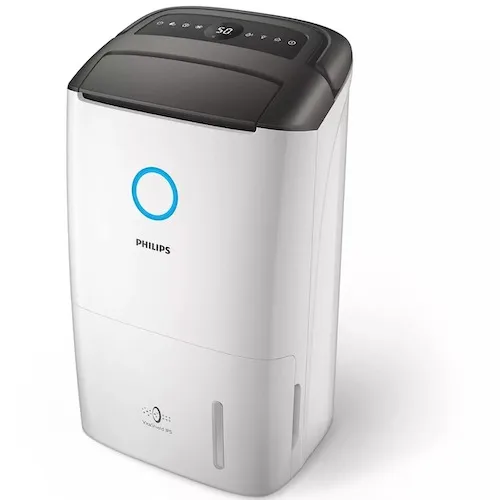
Specifications
Weight and dimensions
How we tested
I used the Philips Series 5000 2-in-1 Dehumidifier and Air Purifier for roughly 6 months in an apartment that is well-sealed and prone to ridiculous levels of humidity. I was sent the Philips Series 5000 2-in-1 Dehumidifier and Air Purifier by Philips' PR company.